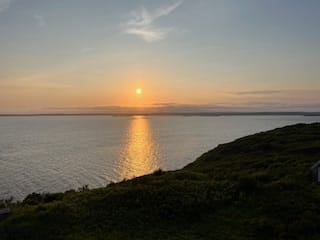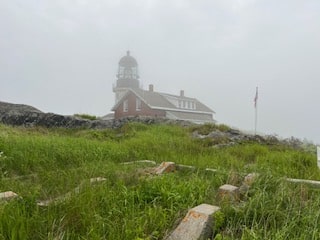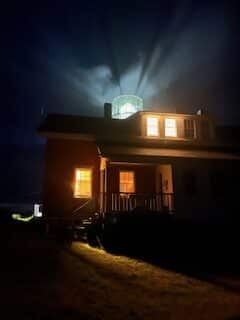
After a spate of fog, cold, and roiling water, good weather has returned. With the heat dome enveloping the east coast, we sit contentedly on Seguin. Saturday the 21st was a day of firsts. It marked the first trip upta town to replenish the larder that was getting thin and clean work clothes that were getting ripe. Though traffic and parking were reminders of what I hadn’t missed, ice cream at the Fountain and seeing a groom and his entourage walking to his wedding on the Bath waterfront were a treat. Mainland friends Logan and Shawn made the purposeful trip easier as they re-supplied us with fresh water and laundered clothes.
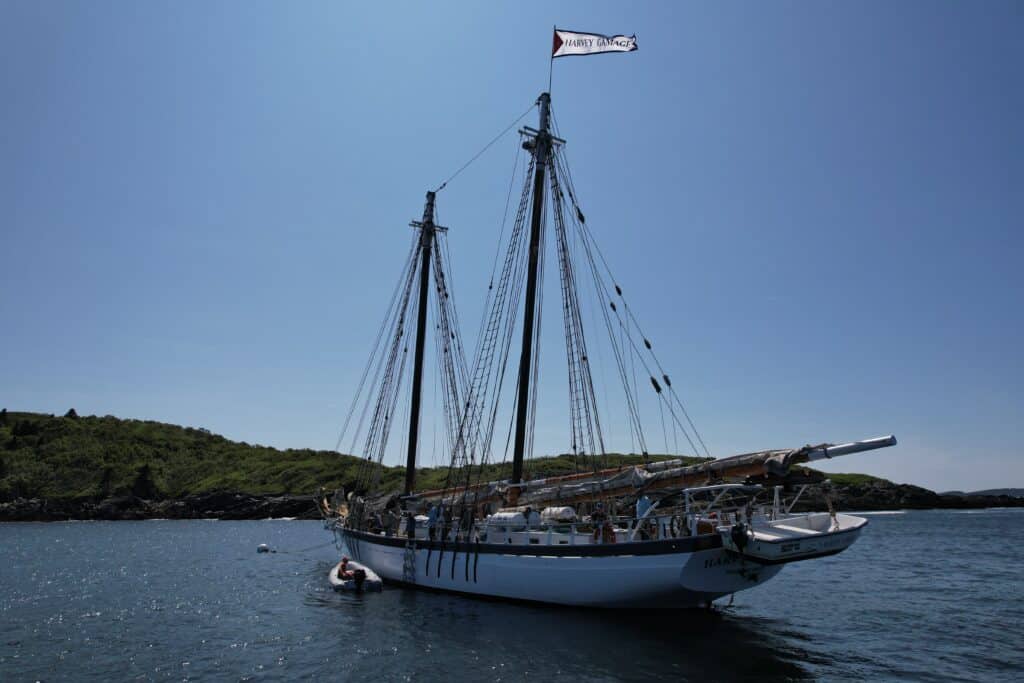
While I was gone to town, two traditional wooden boats jockeyed for the new deep-water mooring. The Harvey Gamage, a 130’ gaff rigged schooner tipped out the 87’ Bowdoin designed for Arctic exploration. The Harvey Gamage crew brought an influx of visitors as they made a quick visit up to the light. We hope the Bowdoin returns soon!
As beautiful as the island undeniably is, it is the eclectic visitors who continue to make the place and our stay here rich. A young Dutch family, just a few weeks from finishing an 18-month circumnavigation of the North Atlantic, had tales of distant ports and crossing with other boats from the Azores but found Maine familiar and a good transition to their imminent return to Amsterdam. The three kids aboard loved Po the dog and in the cove fashioned him a driftwood shelter adorned with buoys.
I got the museum shop in order, and Peter tasked himself with building new rock steps making the way from the beach to the wooden staircase easier to negotiate. As he worked, some spry Kennebunk octogenarians arrived for an annual visit they hadn’t missed since the late 1950s. They embraced the views and relished them as though it were their first time on the island.
Neighbors, formerly of Mouse Island, brought their grandson just freed from the school year to see the light and look at where they’d been and where they were heading. The summer, and all it offers, lay out in front of him.
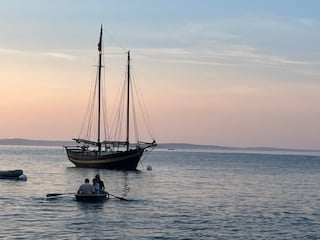
Last, we had a great visit from the crew of the Isabella. Fresh from a reenactment of the Battle of Bunker Hill, the 39’ scaled down version of a halibut schooner put into the cove. Out of the Essex Maritime Museum and Burham boat shop, it overnighted before heading, like many others, to Boothbay’s Windjammer days. The young apprentices aboard were learning both traditional boat building skills, sailing, and navigation. As the hail and hearty crew departed, they left with the rallying cry, “Keep our coast analog!”

